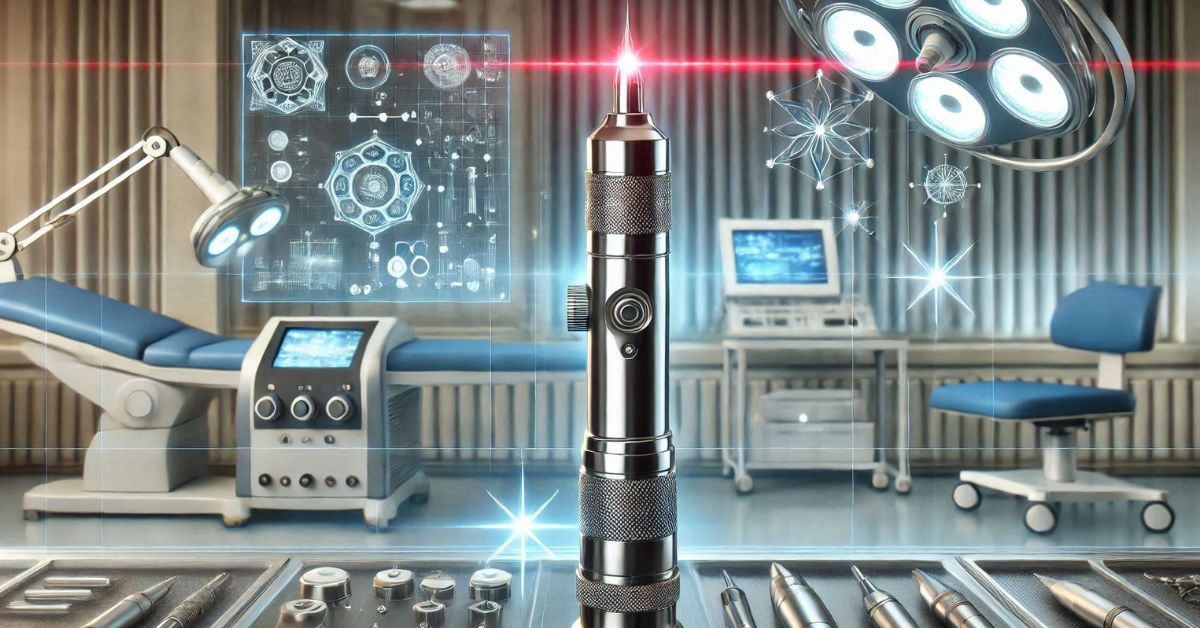Introduction
Hypotube Medical Devices are important parts of modern medical devices, especially in minimally invasive surgeries. These small, precision tubes are used in many types of medical equipment such as catheters, stents, and guidewires. Hypotube Medical Devices manufacturers play a crucial role in creating high-quality tubes that meet the strict standards needed in healthcare. This article will explain what hypotube medical devices are, the manufacturers who make them, and the services they offer to ensure the tubes are safe and effective for medical use.
What is a Hypotube?
A hypotube is a tiny, thin-walled metal tube used in medical devices. These tubes are usually made from stainless steel or Nitinol (a type of metal alloy) and are designed to be strong yet flexible. Hypotube medical devices are commonly used in medical devices such as:
- Catheters (tubes for inserting into blood vessels or other parts of the body)
- Stent Delivery Systems (tools to place stents in blood vessels)
- Guidewires (wires that help doctors navigate inside the body)
These tubes are valued for their durability and small size, making them ideal for procedures that require minimal cuts and quick recovery.
Types of Hypotube Medical Devices and Their Applications
There are different types of hypotube medical devices made from various materials, each serving specific purposes. The most common types are:
- Stainless Steel Hypotubes: These are strong, resistant to rust, and ideal for medical tools that need to hold up under stress.
- Nitinol Hypotubes: Nitinol is a metal that can “remember” its shape and return to it after being bent. This makes Nitinol hypotubes useful for devices like stent delivery systems, where flexibility and shape-changing properties are needed.
Hypotube Medical Devices are used in many medical devices, including:
- Stent delivery systems
- Catheters
- Guidewires
- Microsurgical tools
ALSO READ: The Power of Acrylic Promotional Products: A Simple Guide
Technological Innovations in Hypotube Manufacturing
The technology used to make hypotube medical devices has improved in recent years. Here are some of the most important innovations:
- Laser Cutting: Laser technology allows manufacturers to cut hypotube medical devices with extreme precision, making it possible to create complex shapes and tiny details.
- Electrochemical Grinding: This technique involves using electricity and abrasive materials to grind the tube without producing heat. It’s great for creating smooth, burr-free edges.
- 3D Printing: While still developing, 3D printing has the potential to create custom hypotubes with complex shapes, making them more adaptable to specific medical needs.
These advances make hypotube production faster, more accurate, and customizable for different medical procedures.
Quality Control Standards in Hypotube Manufacturing
Ensuring the quality of hypotube medical devices is extremely important because they are used in medical devices that affect people’s health. Manufacturers must follow strict guidelines to ensure the tubes are safe and reliable. These include:
- ISO 13485: An international standard that ensures manufacturers have a good quality management system for making medical devices.
- FDA Regulations: The U.S. Food and Drug Administration (FDA) sets rules to make sure medical devices are safe and work as expected.
- Biocompatibility Testing: This testing checks if the materials used in hypotubes are safe for use in the human body.
By following these standards, manufacturers can ensure that hypotube medical devices are safe and effective for medical use.
Challenges in Hypotube Manufacturing
Making hypotube medical devices isn’t always easy. Some of the challenges manufacturers face include:
- Precision: Hypotubes must be made with very tight tolerances (exact measurements) to work properly in medical devices. This requires advanced machinery and skilled workers.
- Delicate Materials: Some materials, like Nitinol, are sensitive and need special care during manufacturing to keep their special properties intact.
- Scaling Up Production: It can be hard to produce large quantities of hypotubes while still maintaining high quality and precision.
Overcoming these challenges requires both technology and expertise to ensure that the final product meets medical standards.
The Role of Hypotube Medical Devices in Minimally Invasive Surgery
Hypotube medical devices are vital in minimally invasive surgeries, which aim to reduce the size of incisions and speed up recovery times. These small, flexible tubes help doctors perform procedures with less risk and discomfort for the patient. Some examples of how hypotubes are used in these surgeries include:
- Stent Delivery Systems: Hypotubes help doctors insert stents (tiny mesh tubes) into blood vessels to open up blocked arteries without needing open surgery.
- Catheters: Hypotubes are used in catheters, which are inserted into blood vessels or other areas of the body to deliver medications, fluids, or take measurements.
By using hypotube medical devices, doctors can perform less invasive surgeries, which means faster recovery times and lower risks for patients.
Environmental Considerations in Hypotube Production
As with many industries, hypotube manufacturers are becoming more aware of their impact on the environment. Some of the ways they are working to reduce this impact include:
- Recycling Materials: Some manufacturers use recycled metals in making hypotubes, which helps reduce waste and the need for new materials.
- Energy-Efficient Manufacturing: New manufacturing methods, like laser cutting and 3D printing, are more energy-efficient than traditional methods.
By adopting these practices, manufacturers help reduce the environmental footprint of hypotube production.
Customization of Hypotube Medical Devices for Specific Medical Devices
Medical devices often need custom-designed parts to fit their specific functions. Hypotubes are no exception. Manufacturers offer a range of customization options to meet the unique needs of different medical procedures. Customization can include:
- Material Selection: Choosing the right material (such as stainless steel or Nitinol) based on the device’s needs.
- Design Adjustments: Modifying the tube’s length, diameter, or thickness to suit the particular medical device.
These custom-made hypotubes ensure that each medical device works optimally in its intended application.
Cost Considerations in Hypotube Manufacturing
The cost of making hypotubes depends on several factors:
- Material Costs: The choice of materials affects the price of the tubes. High-quality materials like Nitinol can be more expensive than stainless steel.
- Design Complexity: More intricate designs or custom orders generally cost more because they require advanced manufacturing techniques.
- Production Volume: Larger orders can reduce the cost per unit, while smaller, custom orders may be more expensive.
Manufacturers work with medical companies to find the right balance between cost and quality, ensuring that the final product is affordable without compromising safety or effectiveness.
The Future of Hypotube Manufacturing
The future of hypotube production looks promising, with several exciting developments on the horizon:
- Smart Materials: New materials that can change shape or heal themselves may improve the performance of hypotubes in the future.
- AI and Automation: Artificial intelligence and automated systems will help make manufacturing more precise, faster, and cost-effective.
- 3D-Printed Hypotubes: 3D printing technology could allow for the creation of highly customized hypotubes with complex shapes, opening up new possibilities for medical devices.
These innovations are expected to improve how hypotubes are made and further enhance the effectiveness of medical devices.
How to Choose the Right Hypotube Manufacturer
When selecting a manufacturer for hypotubes, consider the following factors:
- Experience: Look for manufacturers who have experience in making medical devices and who understand the strict regulations and standards in the healthcare industry.
- Customization: Make sure the manufacturer can create custom hypotubes to meet the specific needs of your medical device.
- Quality Assurance: Check that the manufacturer follows industry standards like ISO 13485 and FDA regulations to ensure the tubes are safe and effective.
- Production Capacity: Make sure the manufacturer can handle both small and large orders without sacrificing quality.
Conclusion
Hypotube manufacturers are essential for producing the high-quality tubes that make modern medical devices possible. These companies, such as Freudenberg Medical, TE Connectivity, Colorado Hypotube, Advanced Medical Components, and Custom Wire Technologies, play a key role in developing precision-engineered hypotubes that meet the specific needs of medical devices. Thanks to advancements in technology and a focus on customization, hypotube manufacturers help improve patient care by enabling safer and more effective medical procedures.
ALSO READ: Android Digital Signage in Singapore: A Comprehensive Overview












